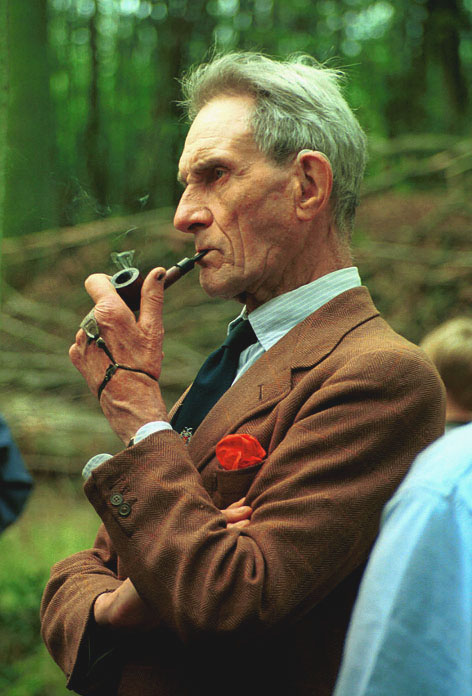Edward Holt Eason (1916 - 1999)

Dr Edward Eason was born at Holmes Chapel in Cheshire, the son of a Manchester cotton broker. From an early age he was keen on natural history and country pursuits. He attended Malvern College where he came under the influence of Theodore H. Savory, the biology master, already a well-known naturalist and a student of the Arachnida. Edward was riding with the Cheshire hounds at 18. He went up to Cambridge, Pembroke College and joined the OTC Cavalry Squadron. He read Medecine at Cambridge and completed his medical training at University College, London.
Dr Eason served at the RAMC in India and Burma during the war and trained in field ambulances; he was in charge of horses and mules; he trained the animals and the men to swim and has alarming tales of crossing the Irrawaddy, Chiudwin and other rivers, both in advancing and again in retreat. Dr Eason had a critical mastoid operation as a youth. His deafness suffered during the hard conditions of the campaign and he was invalided-out to the Field Laboratory of Tropical Diseases at Maymya. Notwithstanding his disability and arduous active service he found time to make original observations on hunting wasps, dung beetles and tree ants. These were subsequently published in the Proceedings of the Cotteswolds Naturalist Field Club (1975). After the war Dr Eason served as a civilian pathologist for a few years but this was not to his taste and his deafness precluded General Practice.
After his marriage to Vivian Haynes in 1948 he took up farming and occupied Bourton Far Hill in the Cotswolds. I first met Edward in Manchester after we had begun corresponding shortly after his paper on Lithobius aulacopus as new to Britain, from near Windermere in the Lakes. Soon after, I had the pleasure of visiting Ted and Vivian on their farm. They specialised in beef cattle and horses. My visit came shortly after one of their horses, Airs and Graces, ridden by Sheila Wilcox, won the Badminton Horse Trials in 1959. Both Ted and Vivian rode with hounds. Ted was an advocate and practitioner of natural farming, using as few inorganic fertilizers as possible and retaining horse power for the ploughing.
The first of three landmarks in Dr Eason's rise to preeminence in the study of Chilopoda was the publication of his monograph Centipedes of the British Isles, Frederick Warne, 1964, pp294, 490 figs, 5 plates wich still remains the standard work; originally priced at £ 3.30 and now on the rare occasion that a copy comes on the market, will be priced at around £ 80. The book is noteable for the great care and precision of the author's own figures in text. It is dedicated to Theodore Savory, for inspiring him with an interest in Arthropoda.
The second landmark was the award in 1980 of the Stamford Raffles Prize for amateur research, by the Zoological Society of London for "distinguished work on the taxonomy of centipedes". At this time, Eason had published 27 papers including species from Siberia, Hawai, Seychelles, Sardinia, Majorca. In a paper presented to the Second International Congress of Myriapodology at Manchester in 1972 on Certain Aspects of the Generic Classification of the Lithobiidae with Special Reference to Geographical Distribution, Eason writes "A revised classification of the Lithobiidae is obviously required but will be a vast undertaking... a compromise between the dumping of Attems and the splitting of Chamberlin... should enable the Lithobiidae to make their due contribution to zoogeographical knowledge".
The third landmark, or rather, phase, consisted of a further 28 publications based on collections from Papua, Macaronesian Islands, Afghanistan, Thailand, Nepal, Sri Lanka, Falkland Isles, Kurile Islands and European countries. These papers go a large part of the way to completing the vast undertaking he reffered to in 1974. In February 1998, Ted sent to me 17 papers he published between 1989 to 1997. The last papers on Kirghizia and Kasakhstan, he says "is my swan song... shall not be writing more as my eyesight and manual dexterity are both failing" - this note in his 82nd year !
Dr Eason attended many of the International Congresses in Myriapodology; to many of these we travelled together and I valued his amiable companionship. The last I remember was our trip to Innsbruck in 1990. This included a lightning dash between Paddington and Victoria, (Ted was 75) just catching the last train to Moreton-in-Marsh. I stayed the night at Bourton Far Hill; the next day he took me on a tour of the trees he had planted, partly as a means of earning a little semi-retirement from farming. Many students of the Chilopoda, from many parts of the world visited Bourton Far Hill. Both Ted and his visitors enjoyed the newly sylvan aspect of much of his land. It is with deep respect and admiration that many of his friends will bid their farewells to our elder Statesman of Myriapodology. Dr Eason leaves a daughter, Marian and a grandson.
J. Gordon Blower, March 2000
Photo credit: Zoltan Korsos. Ted Eason during the 9th International Congress of Myriapodology (Paris, France). Excursion in the Fontainebleau Forest.
